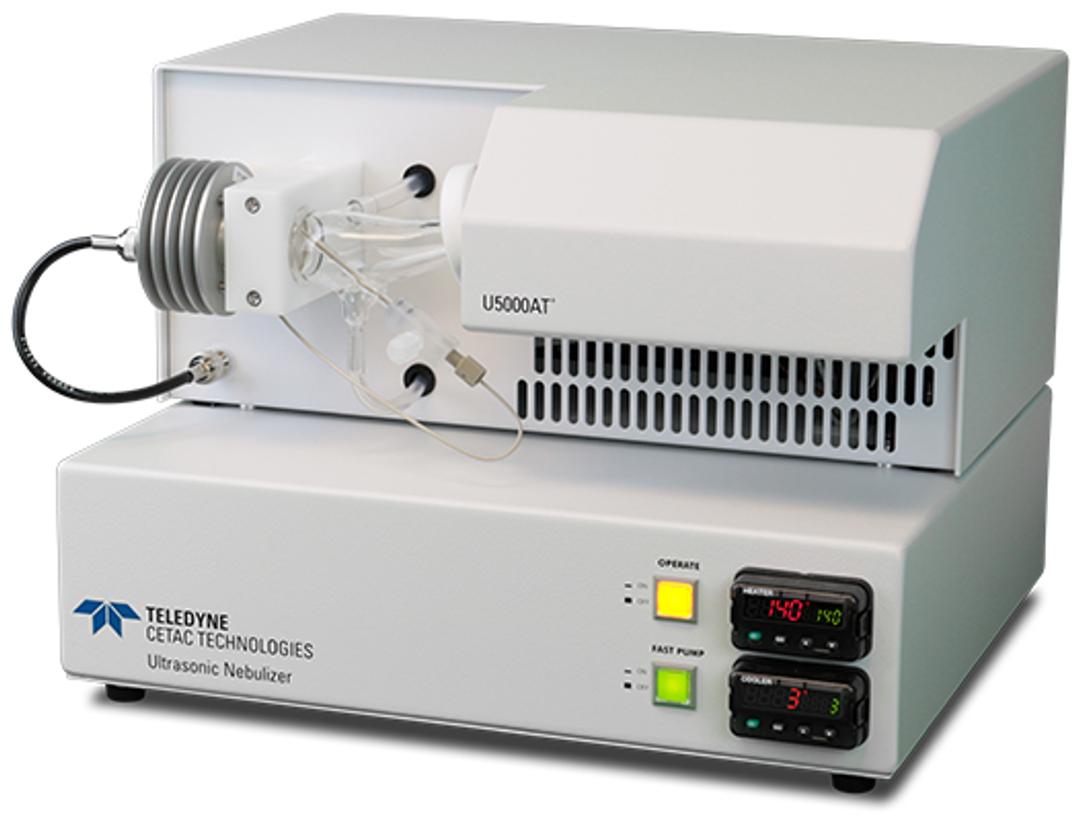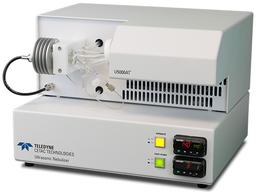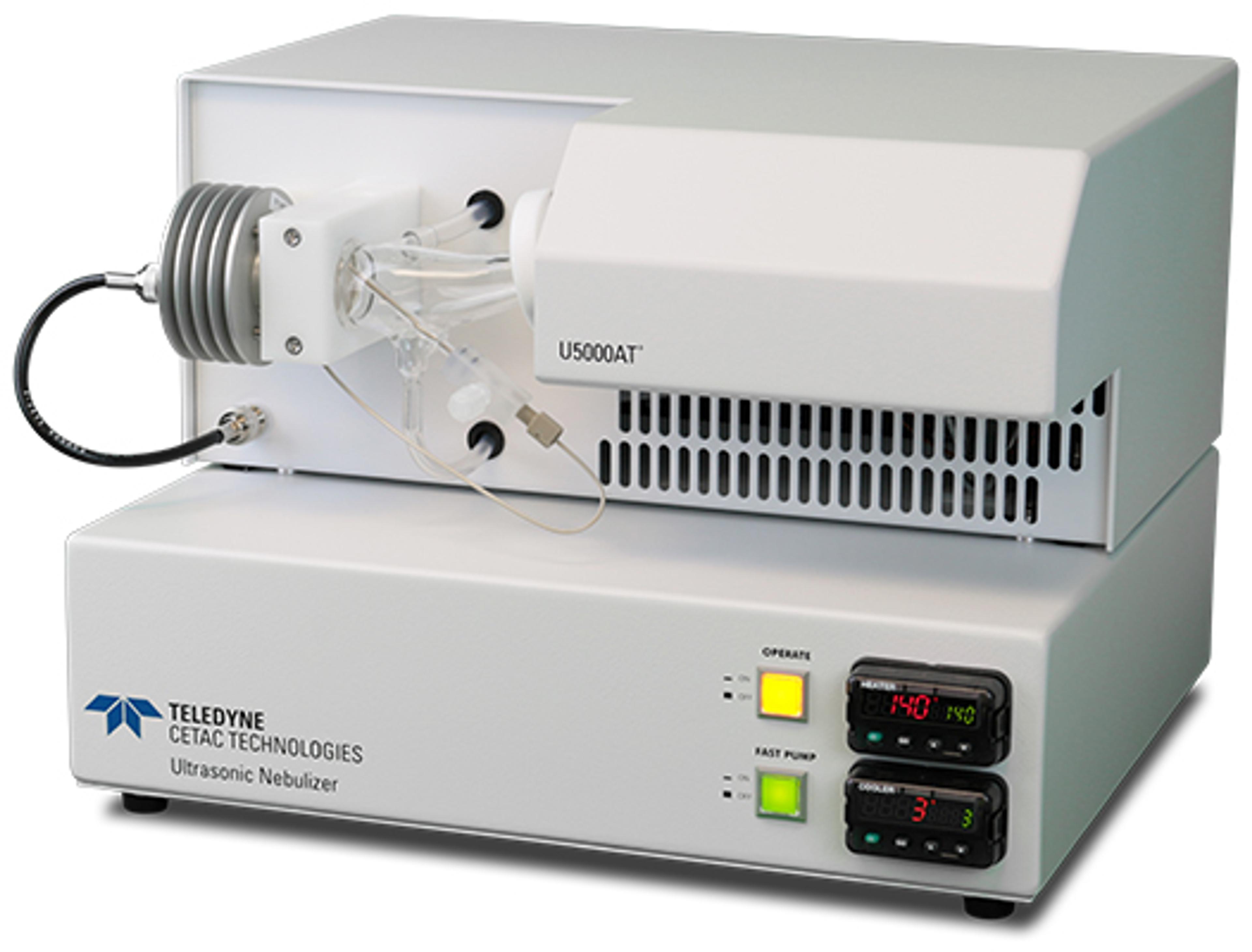U5000AT+ Ultrasonic Nebulizer
Detection limits up to 10x lower for ICP-AES and ICP-MS
All right
Water analyses
Good and useful product to analyze with the highest sensitivity
Review Date: 1 May 2019 | Teledyne Labs
Very useful in increasing precision of the measurements of isotope ratios by qICP-MS
Uranium isotope ratio analysis in uranium rich samples
The ultrasonic nebulizer with the desolvator is used to enhance the signal of minor uranium and some thorium isotopes for isotope ratio analysis by QQQICP-MS. The enhancement is measured as 5x, with the decrease of the UH+ interferences at 10-5 level. This leads to the improved precision in determining the presence of artificial U isotopes, e.g. U-233 and U-236, as well as measuring Th-230/U-234 ratios for uranium radiochronometry.
Review Date: 1 May 2019 | Teledyne Labs
The U5000AT+ Ultrasonic Nebulizer offers enhanced detection limits (up to 10x or greater) for ICP‑AES and ICP‑MS.
AutoTune Power Supply CETAC’s AutoTune Power Supply automatically senses changes in sample composition to ensure uniform and consistent aerosol generation. This AutoTune feature permits continuous use of the nebulizer even in the absence of a sample, allowing unattended operation.
Efficient Desolvation System The U5000AT+ features a built-in desolvation system with a Peltier-cooled condenser. Dedicated teperature controllers allow fine adjustment of heater and condenser temperatures for best analytical performance. See schematic at right.
Detection Limits Detection limits obtained with the U5000AT+ on ICP-AES are listed below for both radial and axial ICP torch configurations. Detection limits are improved in a range of 5 to 25 times, depending upon the analyte. The U5000AT+ may also be coupled with an ICP-MS, providing sub-ppt detection limits for many elements, particularly the platinum group elements (PGEs), the rare earth elements (REEs) and the actinides.
Utilizing the U5000AT+ for Aqueous Samples by ICP-AES The CETAC U5000AT+ improves detection limits on any ICP-AES by factors of 5 to 25. This improvement in ICP-AES detection limits allows the transfer of significant amounts of work from Graphite Furnace AA to ICP-AES, where sample throughput is much greater.
Signal Stability Long-term (10-hour) signal stability with the U5000AT+ for 500µg/L Pb spiked into drinking water is shown in the chart at right. Note the average stability is excellent at 0.40% RSD. (Each data point represents the mean of 180 ten-second measurements.) No internal standard was used in the stability experiment.
Signal Stabilization and Sample Rinse-Out Signal stabilization, (Click figure on right), with the U5000AT+ is rapid, with signal reaching its plateau approximately 12 seconds after the sample reaches the ultrasonic transducer. Sample rinse-out is also fast, with the analyte concentrations decreasing to background levels after approximately 25 seconds. Sample and rinse solution (1% HNO3) uptake rate was 2.0 mL/min.
Modular Design The CETAC U5000AT+ is equipped with a modular nebulizer/desolvation system. All wetted parts of the U5000AT+ are within this user removable module. ICP-AES instrumentation allows users to measure elements at high (ppm) and low (ppb) concentrations. A second (optional) nebulizer/desolvation module may be used to alleviate sample memory effects and simplify nebulizer cleanup. Changeover from one module to another takes less than five minutes.





